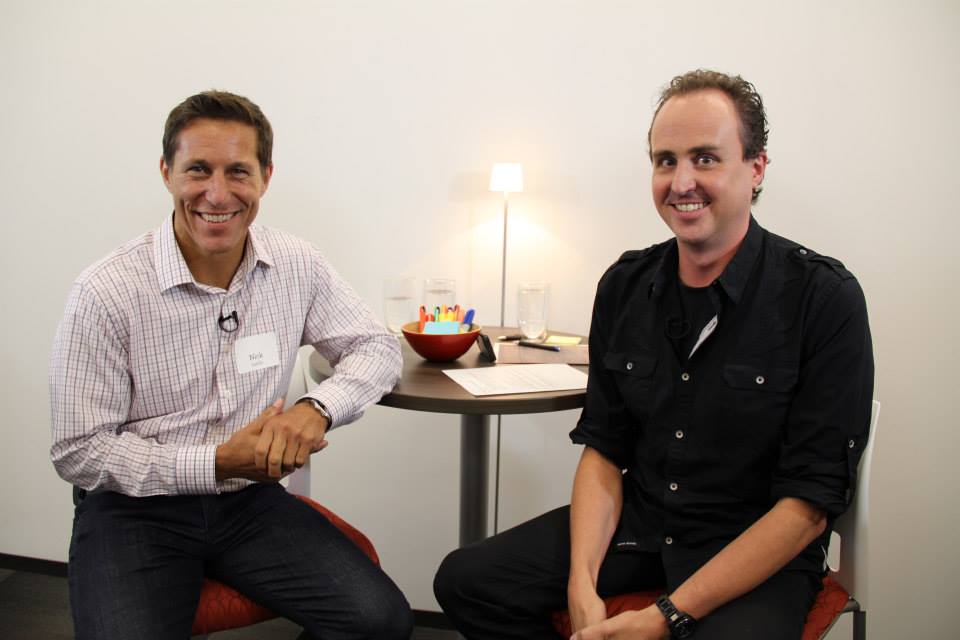
Farewell...
Workspring has chosen not to renew its lease in downtown Chicago. It has been our team’s pleasure to provide thousands of training, brainstorming and strategizing experiences to companies across the globe, and we are grateful to all of our customers. If you need to contact us, email info@workspring.com.
3 Effective Ways to Give Feedback

By Mark J. Carter
How To Use Feedback Loops When Working With Millennials
While everyone seems to be talking about “working with millennials” in the media, in the office and next to the water cooler, not many have built a successful business and leadership structure doing just that.
Recently at Workspring in Chicago I had the opportunity to interview Nick Sarillo at our event “Working With and Mentoring Millennials: Cross-Generational Leadership.” Nick is the founder and owner of Nick’s Pizza Pub and Restaurant, the sixth busiest independent pizza chain in America with over 200 employees (70% of which are under the age of 25). Because he creates leadership opportunities for everyone that works for him, he understands the value of advice and feedback.
Nick creates results by following three kinds of feedback. The feedback techniques are meant for people you directly work with, and you can use at your workplace tomorrow and get results.
1. FEEDBACK LOOP
This is a two-way conversation. At the end of the day (or the shift, whichever applies) ask two specific questions:
- “What is one thing you think you did well today?” and
- “If you could replay your day, what is one thing you could do to enhance your performance?”
THEN provide your own feedback for them completing the loop:
- “One thing I thought you did well today was…”
- “And one thing I would like you to enhance to improve your performance is…”
Key point here: Notice that you never say anything about what they did wrong; you start out positively and keep the conversation moving by staying constructive and positive. Be sure to use open ended questions.
This step is the foundation for a great professional training, mentoring, and advisory relationship. Once you set the foundation, then you’re ready for the next step.
2. PERFORMANCE FEEDBACK
This kind of feedback is more one-sided and takes less time than the Feedback Loop. Performance Feedback is still a conversation with someone who reports directly to you, however, this time you’re providing them with your opinion about one thing they did well that day and one way you think they can improve their performance. Remember: you’re providing them with your opinion about one thing they did WELL (not right or wrong).
This stage is possible because you’ve already created a mentoring relationship with them by starting with the Feedback Loop.
Key point here: Get specific!
Once you’ve created this amount of trust and rapport in the workplace, you’re ready to give…
3. DIRECT FEEDBACK
Direct Feedback is the quickest form of feedback you can use. Many managers, mentors and superiors jump right to direct feedback – which is the wrong way to go. Without understanding and rapport with the other person, this kind of feedback can be abrasive.
In Nick’s world Direct Feedback is five words or less.
At Nick’s restaurants, saying “Good job” is a bad choice of words. Why? It’s not specific. If you only say “Good job” to someone, how do they know how to do a good job again? How can they recreate the magic of doing a “Good job”? It has to be specific, such as:
- Great answers in that interview!
- Great work scheduling our staff!
- Next time ask more questions.
WHAT’S NEXT?
Now that we’ve looked at ways to get and give advice, avoid problems with criticism, and have productive conversations – what conversations will you have tomorrow with your staff to create success in your workplace?
More about Nick
Nick’s Pizza & Pub – the sixth busiest independent pizza company in the United States. Nick credits his company’s success to his purpose-driven culture, which is the focus of his new book, A Slice of the Pie: How to Build a Big Little Business. Nick is a regular speaker at HR conferences, and his insights have been featured in The New York Times, The Economist, Inc., Fast Company, and Investor’s Business Daily.
More about Mark J. Carter
Carter is the founder of ONE80, LLC: Bringing Conversations & Storytelling Back To Business… Through Idea Climbing™ Events, Marketing and Mentoring. Over the past 15 years he has built networking organizations for young professionals, worked with and interviewed experts from New York Times Bestselling Authors to the Founder of the TED Conferences and created mentoring programs to “demystify” the mentoring process for everyone involved. Say hello to him on Twitter.